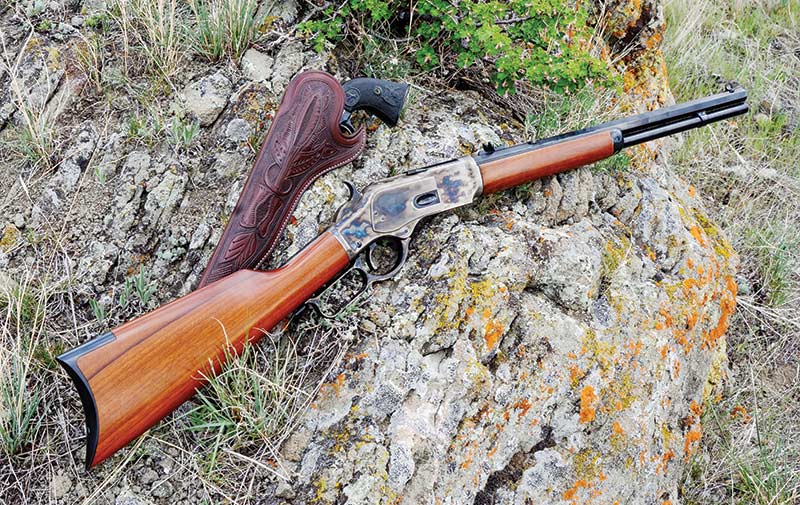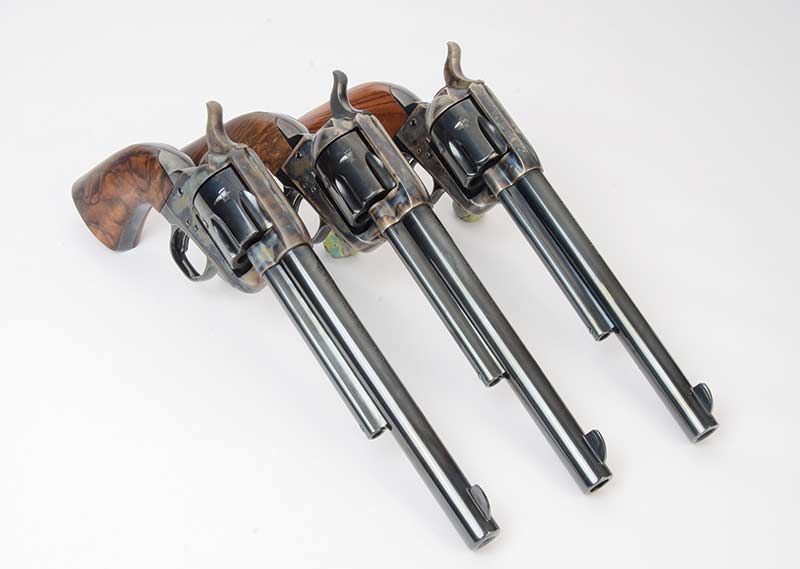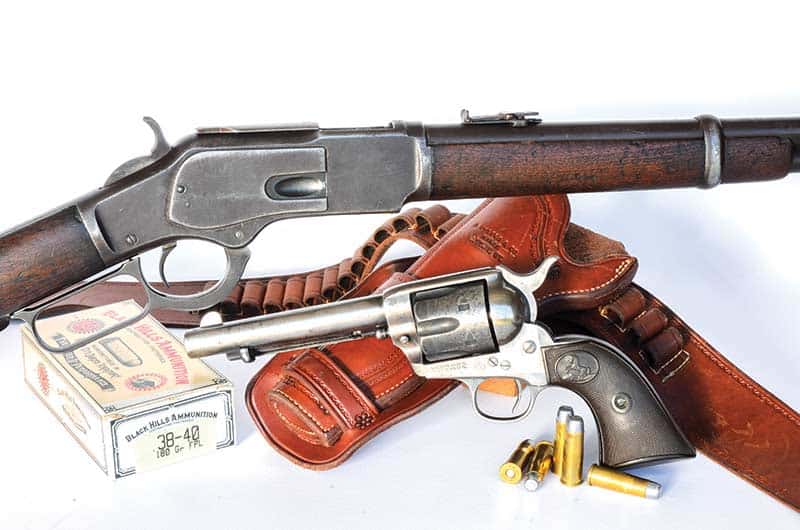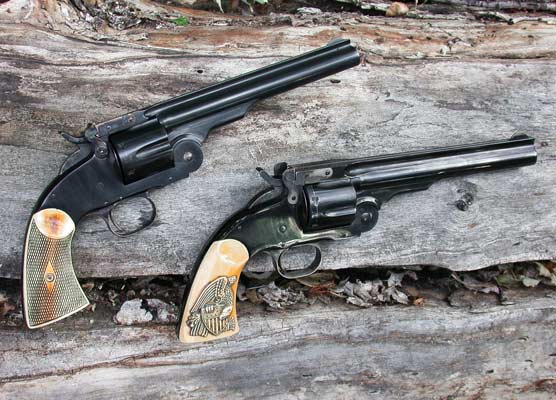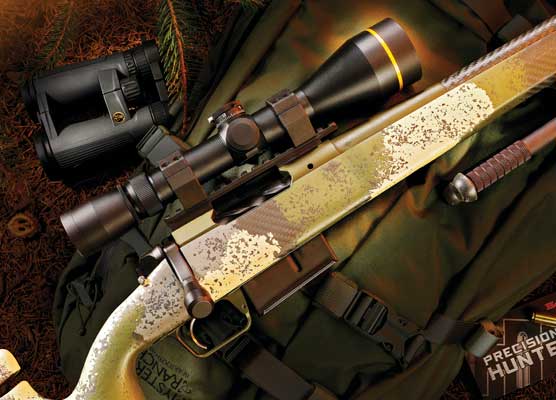.32/.38/.33 WCF Cartridge Combos
Duke’s All-Time FavEs
Over many decades of shooting, one is bound to develop favorites. One of mine is a genre of firearms; pistol-cartridge rifles, carbines and revolvers. For this, my all-time favorite cartridges are the .32/.38/.44 Winchester Center Fires (WCF) originated by Winchester in the late 1800s.
Let’s start at .32 WCF (.32-20). Over the last few years, I’ve developed a great fondness for .32-20 as both a carbine and revolver cartridge. They are “soft” shooters for arthritic hands. I landed five nice .32-20 SAAs in the last couple years then bought a couple Cimarron/Uberti Model 1873 replicas. One of my character flaws is never being satisfied with just one of anything!
Two of my .32-20 SAAs have 7 ½” barrels. One was made in 1897 and one in 2010. Both shoot very accurately with little recoil. More recently I acquired a 1905 vintage Winchester Model 1892 saddle ring carbine but as of this writing have not had time to wring it out for the best handload.
Speaking of .32-20 handloads — a fine one I’ve been using is 3.5 grains of Titegroup with 100- to 115-grain RN/FP bullets. This shape is necessary for safe shooting in tubular magazine lever guns. I cast my own, being greatly happy with a 4-cavity mold from MP Molds of Slovenia. It drops 105-grain RN/FP solids or being convertible, 100-grain hollowpoints. Commercial cast bullets are plentiful for non-casters.
From my 7 ½” SAAs velocity runs about 900 fps but add another 200 fps from the 20″ barrel of the carbine. Here’s a word of caution — I got many pierced primers in my .32-20 handloads with small pistol primers. To avoid eroding the SAA’s firing pins, a switch was made to small rifle prim
The .38 WCF
Moving up in caliber is perhaps my all-time favorite pistol cartridge combo — the .38 WCF (.38-40). It’s a well-known fact the .38-40 revolver loads easily duplicate .40 S&W in semi-autos. Since buying my first .38-40 in 1983, I’ve managed to own dozens of such revolvers, lever guns and even a few original Colt Lightning pump-actions.
Once, at a large cowboy action shooting event, I stopped to talk to a vendor with whom I was on friendly terms. Looking over his offerings, I spotted a Winchester Model 1892 SRC and a Colt Lightning in “short rifle” configuration. I asked him why no one had bought either. He said, “They are .38-40s and everyone seems fearful of reloading for them.” My answer was, “I’m not!” and bought both. I still have the Winchester but sold the Lightning in a fit of stupidity when the full-auto bug bit me.
Currently my revolver collection holds .38-40s SAAs with barrel lengths from four to 7 ½”. One is even a Colt New Service double-action. My favorites again are the two with longer barrels. One was made in 1926 and the other in 1996. One thing is for sure: When I take an afternoon away from this word processor and go to my home range for some fun shooting, it’s likely a .38-40 of one sort or another will be with me.
As with .32-20 I prefer to shoot my own cast bullets with RCBS #40-180CM being my top choice. Of commercial cast bullets, I’ve shot many hundreds based on Magma Engineering’s 175-grain bevel base bullet. Note the “40” in the RCBS mold number. This is because .38-40 actually shoots bullets exactly the same diameter as .40 S&W no matter what Winchester named it back in 1879.
If a shooter wishes to duplicate the .40 S&W then 7.0 grains of Unique under 175/180 grain bullets will break 900 fps from a 5 ½” barrel. For light plinking and target loads, 5.5 grains of Trail Boss hits about 750s fps. Again add 200 fps for 20″ carbines.
The .44 WCF
When Yvonne and I were involved in cowboy action shooting, my choice of caliber was mostly .44 WCF (.44-40) because I wanted to shoot in the Black Powder Cartridge class. You get more bang and smoke for your bucks with BP! I have vintage Winchester .44-40 lever guns but the one I’ve fired the most is a Cimarron Model 1873, with a 24″ barrel in the pistol grip configuration. And guess what: I also favor 7 ½” barrels on my Colt Frontier Six-Shooters. One was made in 1913 and another in 2010.
For black powder handloads, RCBS #44-200FN is a true winner. It’s accurate and slides through a lever gun perfectly. For use with BP, the bullets need lubing with SPG or DGL to help keep fouling soft. Modern Winchester brass will hold about 35 grains of Swiss 1 ½ Fg black powder and will give over 900 fps from 7 ½” barrels. Add about 300 fps from 24″ barrels.
Here at home, I seldom use black powder for my fun shooting. I’ve found Trail Boss powder at 6.0 grains pushes 200-grain bullets to about 750 fps from 7 ½” revolver barrels and about 900 fps from 24″ rifle barrels. In a recent project I discovered RCBS 44-200CM and Lyman 427666 bullet molds for 200-grain RN/FP bullets give excellent results. There is no shortage of good .44-40 bullets whether they’re home-cast or commercially made.
Shooting the above guns and loads are usually how I spent my spare time.
